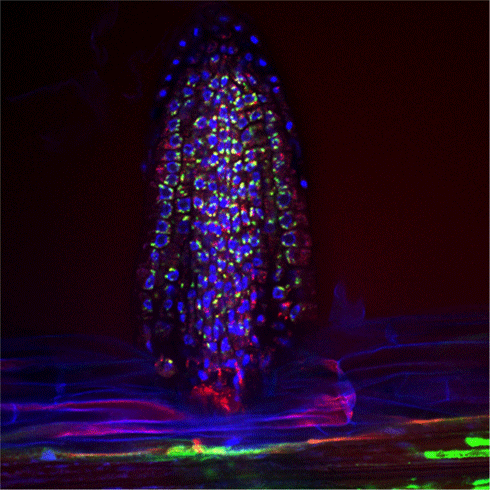
|
Published: 13 August 2012
‘Probiotics’ in plant roots could cut chemical use
An international study has shed light on how microbial communities, or microbiomes, living in and on plant roots can boost plant health, growth and pest-resistance. The findings could lead to strategies to augment or even replace fertilisers and pesticides.
The researchers studied the microbiome in soil around the roots of more than 600 tiny Arabidopsis thaliana (mouse-ear cress) plants to find out how it helps shuttle nutrients and information into and out of the roots and surrounding soil.
The findings, published in Nature, suggest that such knowledge of the plant-root microbiome could lead to the development of locally derived plant probiotics to augment or even replace fertilisers and pesticides and improve plant health.
The researchers say the microbiome can be viewed as an extension of the plant’s genome. ‘We can’t really know a plant genome’s full functional capacity until we also understand the functional capacity and the drivers governing assembly of its associated microbiome,’ said co-author Susannah Tringe, head of the US Department of Energy Joint Genome Institute’s Metagenome Program.
‘In the same way that microbes play critical roles in and around our own bodies, we are adopting this concept of host-associated metagenomics in plant genomics as well, as it will ultimately lead to predictive interventions that will increase plant health and productivity, disease resistance and carbon capture.’
Senior author Jeff Dangl, of the Howard Hughes Medical Institute in the USA, said the study provided a clearer indication of how host plants and soil microbes might shape the shared microbiome.
‘We defined microbial taxa that are reproducibly attracted to plant roots, and which ones the plant allows to penetrate into the roots, presumably in exchange for nutritional or other benefits,’ he said.
Co-author Philip Hugenholtz from the Australian Centre for Ecogenomics at the University of Queensland added that the human microbiome had been the ‘poster child’ for the application of genomic methods to host-associated ecosystems.
‘However plants have a long and impressive history in furthering our understanding of host-microbe interactions,’ he said.
‘I believe that this work and a sister [article] in the same issue [of Nature] foreshadow tremendous advances in the study of plant-microbe interactions in the coming years.’
The researchers grew Arabidopsis thaliana in two different soil types. The root soil was washed off and collected, and finally the roots themselves were frozen and ground up to access the microbes deep inside.
The researchers isolated DNA from three sources – the soil, the rhizosphere and the bacteria within the plant – and looked at one particular gene, a diagnostic tag that can help distinguish between microbial species. They sifted through massive amounts of sequence data from the soil, root-soil interface and root-cell compartment: in all, over 1200 samples constituting some two billion bases of high-quality DNA code.
The team is now engaged in a larger-scale, long-term study to define the root-associated microbiomes of three important model plant species across a diversity of geographical locations and ecological conditions.
Source: University of Queensland




